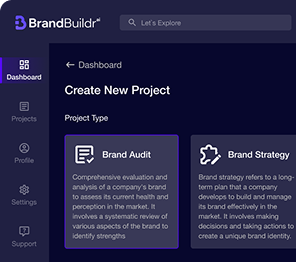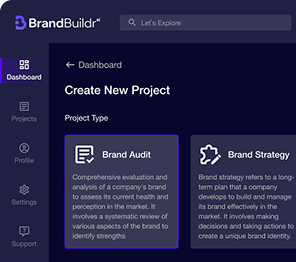In today's competitive and fast-paced digital landscape, startups are constantly seeking innovative ways to gain a foothold in their industries. For many, custom software development has emerged as a key driver of innovation and growth, offering tailored solutions that meet specific business needs and goals. Unlike off-the-shelf software, which often comes with limitations in functionality, scalability, and flexibility, custom software empowers startups to develop unique, scalable, and efficient systems that align perfectly with their business models.
This article explores the benefits of custom software for startups, how it accelerates innovation and growth, and key considerations for choosing the right development approach.
%20(1).avif)
1. Why Startups Should Choose Custom Software Development
For startups, leveraging technology is crucial to driving operational efficiency, enhancing customer experiences, and building innovative products or services. Off-the-shelf solutions may seem like a quick and easy option, but they often fail to provide the customization and scalability that startups need to grow. Here’s why custom software development is a better option for startups:
Tailored to Specific Business Needs
One of the most significant advantages of custom software is that it is built specifically to meet a startup's unique requirements. Instead of forcing your business to adapt to generic software, custom solutions allow you to develop features and workflows that align with your operational processes.
For example, if you're a startup in the e-commerce space, you may need a custom order management system that integrates seamlessly with your logistics and inventory systems. Off-the-shelf solutions might not offer this level of integration or flexibility, leading to inefficiencies and delays.
Scalability
As startups grow, their software needs evolve. Off-the-shelf software may initially provide the necessary tools, but it often becomes inadequate as the business scales. Custom software, on the other hand, is designed with scalability in mind. Whether your startup experiences rapid growth or gradual expansion, custom solutions can be adjusted and expanded to meet increasing demands.
For instance, a startup that begins with a small customer base may need to handle thousands or even millions of users as it grows. Custom software can accommodate this growth without the need for a complete overhaul, ensuring that the system continues to function efficiently as the business scales.
Competitive Advantage
Custom software allows startups to differentiate themselves from competitors by offering unique features and functionalities that are not available in standard software solutions. This can be a significant competitive advantage in industries where innovation and user experience are critical.
For example, a fintech startup might develop a custom mobile app that offers personalized financial planning tools based on user behavior, giving it a competitive edge over rivals that rely on generic software solutions with limited features.
Improved Efficiency
Custom software is designed to optimize business processes, streamline operations, and eliminate unnecessary steps. By automating repetitive tasks and integrating different systems into one cohesive platform, custom solutions can drastically improve efficiency and reduce operational costs.
For example, a healthcare startup can develop custom software to manage patient records, schedule appointments, and track medical history, reducing the need for manual input and minimizing errors.
Enhanced Security
Startups often handle sensitive data, whether it's customer information, financial records, or proprietary business data. Off-the-shelf software may come with standard security features, but custom software allows startups to implement tailored security measures based on the specific nature of their data and operations.
For instance, a healthtech startup dealing with patient data can develop custom software that complies with HIPAA regulations and implements advanced encryption techniques to ensure data privacy and security.

2. How Custom Software Accelerates Innovation
Innovation is the lifeblood of startups, and custom software plays a crucial role in enabling startups to innovate quickly and effectively. Here’s how custom software helps accelerate innovation:
Faster Time-to-Market
Custom software development enables startups to bring new ideas and products to market quickly. With off-the-shelf solutions, startups often spend time trying to adapt the software to fit their needs, delaying the launch of their product or service. Custom software, on the other hand, is designed specifically for the startup's requirements, reducing development time and enabling faster deployment.
For example, a startup that develops a custom customer relationship management (CRM) system can launch new marketing campaigns, track customer interactions, and analyze data more efficiently, enabling them to iterate and improve their product or service rapidly.
Flexibility to Pivot
Startups often need to pivot their business models or adapt to changing market conditions. Custom software provides the flexibility to make these changes quickly without being constrained by the limitations of off-the-shelf solutions.
For instance, if a startup in the logistics industry decides to expand its services to include last-mile delivery, custom software can be quickly updated to accommodate the new functionality, allowing the business to pivot without disrupting operations.
Integration with Emerging Technologies
Custom software allows startups to integrate emerging technologies like AI, machine learning, blockchain, and IoT into their platforms, giving them the ability to create cutting-edge solutions that meet evolving customer demands.
For example, a startup in the retail sector could develop custom software that uses AI algorithms to analyze customer behavior and recommend personalized products, improving customer engagement and increasing sales.
Continuous Improvement and Iteration
Custom software development is an iterative process, allowing startups to continuously improve their solutions based on user feedback and changing market demands. This iterative approach enables startups to stay ahead of the competition by constantly refining their products and services.
For example, a startup in the SaaS industry can use customer feedback to identify pain points and develop new features that address these issues, improving user satisfaction and retention.
.avif)
3. Steps to Successful Custom Software Development for Startups
Building custom software can be a complex process, especially for startups with limited resources and technical expertise. However, by following a structured approach, startups can ensure the successful development and implementation of custom software solutions. Here are the key steps to follow:
Step 1: Define Your Business Requirements
Before starting the development process, startups should clearly define their business requirements and objectives. This includes identifying the specific problems the software will solve, the features and functionalities it should have, and the target users.
Step 2: Choose the Right Development Team
Hiring the right development team is crucial for the success of a custom software project. Startups should look for a development partner with experience in building custom software for startups and a deep understanding of the industry in which the startup operates.
For example, a startup in the healthtech sector should work with developers who have experience building HIPAA-compliant software and understand the unique challenges of the healthcare industry.

Step 3: Develop a Minimum Viable Product (MVP)
An MVP is a simplified version of the software that includes only the essential features required to solve the startup's core problem. Developing an MVP allows startups to test their software with real users, gather feedback, and make improvements before investing in a full-scale solution.
Step 4: Implement Agile Development Practices
Agile development is an iterative approach that emphasizes collaboration, flexibility, and continuous improvement. Startups should adopt agile practices to ensure that the software development process is efficient and adaptable to changing business needs.
Step 5: Focus on User Experience (UX)
The success of custom software depends on how well it meets the needs of its users. Startups should prioritize user experience (UX) by designing intuitive interfaces, minimizing the learning curve, and ensuring that the software is easy to navigate.
Step 6: Test and Iterate
Once the software is developed, thorough testing is essential to identify and fix any bugs or performance issues. Startups should also gather feedback from users and make iterative improvements to ensure that the software continues to meet their needs as the business grows.

4. Challenges and Considerations for Custom Software Development
While custom software offers numerous benefits for startups, it also comes with challenges. Startups should be aware of the following considerations when embarking on a custom software development project:
Cost
Custom software development is often more expensive upfront compared to off-the-shelf solutions. Startups need to budget for development costs, maintenance, and ongoing updates. However, the long-term benefits of scalability, efficiency, and competitive advantage often outweigh the initial investment.
Time
Custom software development can take longer than implementing off-the-shelf solutions. Startups need to plan for a longer development timeline and ensure they have the resources to support the project through to completion.
Maintenance and Updates
Custom software requires ongoing maintenance and updates to ensure that it continues to function smoothly as the business grows and technology evolves. Startups should budget for these ongoing costs and work with a development partner that offers long-term support.
Security
Custom software development offers greater control over security, but it also requires startups to take responsibility for implementing robust security measures. Startups must work with developers who understand the latest security protocols and ensure that their software is protected against cyber threats.
Custom software is not just a tool; it’s a strategic asset that empowers startups to innovate rapidly, adapt to market changes, and achieve sustainable growth.
Conclusion
Custom software development offers startups a powerful tool to accelerate innovation and growth. By building solutions tailored to their specific needs, startups can gain a competitive edge, improve efficiency, and scale their businesses more effectively. While the process requires careful planning, the long-term benefits far outweigh the challenges, making custom software an invaluable investment for startups looking to thrive in today's digital landscape. By focusing on user experience, scalability, and continuous improvement, startups can unlock the full potential of custom software to drive success and innovation.

Heading 1
Heading 2
Heading 3
Heading 4
Heading 5
Heading 6
Lorem ipsum dolor sit amet, consectetur adipiscing elit, sed do eiusmod tempor incididunt ut labore et dolore magna aliqua. Ut enim ad minim veniam, quis nostrud exercitation ullamco laboris nisi ut aliquip ex ea commodo consequat. Duis aute irure dolor in reprehenderit in voluptate velit esse cillum dolore eu fugiat nulla pariatur.
Block quote
Ordered list
- Item 1
- Item 2
- Item 3
Unordered list
- Item A
- Item B
- Item C
Bold text
Emphasis
Superscript
Subscript





















.avif)



.avif)

.avif)


